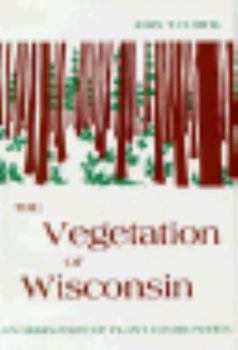Vegetation of Wisconsin: An Ordination of Plant Communities
Select Format
Select Condition 
Book Overview
Just as E. M. Forster's novel of gay love, Maurice, remained unpublished throughout his lifetime, Glenway Wescott's long story "A Visit to Priapus" was also destined to be a posthumous work, buried from 1938 until this century in Wescott's massive archive of manuscripts, journals, notebooks, and letters. The autobiographical story is about a literary man, frustrated in love, who puts aside his pride and makes a date with a young artist in Maine...
Format:Hardcover
Language:English
ISBN:0299019403
ISBN13:9780299019402
Release Date:November 1959
Publisher:University of Wisconsin Press
Length:704 Pages
Weight:2.42 lbs.
Dimensions:1.7" x 6.3" x 9.3"
Customer Reviews
1 rating
The Place We Live: Ecology in the Upper Midwest
Published by Thriftbooks.com User , 23 years ago
When it comes to describing the plants of a locale with all its ecological intricacies, it could be said that John Curtis did it first and best. The only way he could have done it better was to expand beyond Wisconsin's boundaries and write "The Ecology and Ecosystems of the Midwest." Still, and after 42 years in print, this book remains the definitive source for understanding the relationships among the plants of bogs, forests, prairies, lake dunes, and the other habitats of the Upper Midwest. Inset range maps, photos, lists of plants with their "commonness ratings (my term)" in the different habitats, brief histories of human uses of the habitats, and descriptions of the environment (soils, hydrology, etc.) complete the picture. Growing up in Michigan and working for years in Minnesota and the rest of the Midwest, I can attest that it serves these locales reasonably well, and currently there is nothing better. It would work in Iowa, northern Illinois and Indiana, and southern Ontario as well. As a child of the information age, I admit that the presentation of graphics, charts, etc. is not as sharp as it could be. Recent advances in ecology and statistical computing power unavailable to Curtis make some of his analyses a bit dated. Curtis was also somewhat doctrinaire in his view of plant species distributions across ecological gradients (a Gleasonian individualist, for those who wonder), leading him to ignore the important distinction between prairies on sand versus heavier soils, for example. All in all, this book is an excellent primer for anyone with the desire to become more familiar with the intricate composition and workings of midwestern ecosystems and, along the way, feel just a little more at home here.





